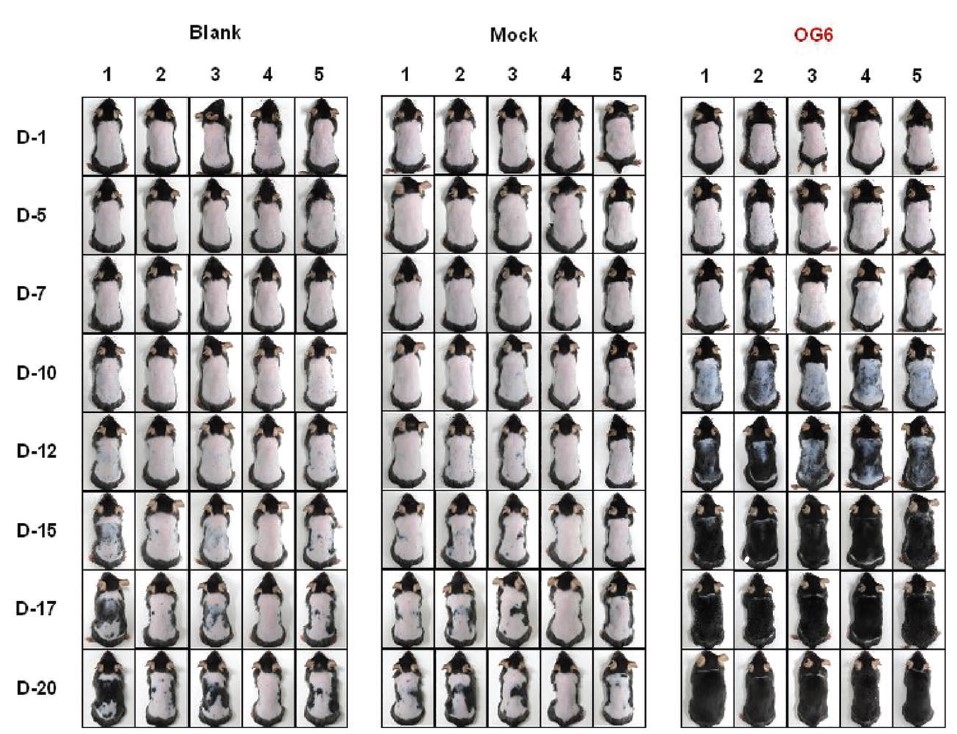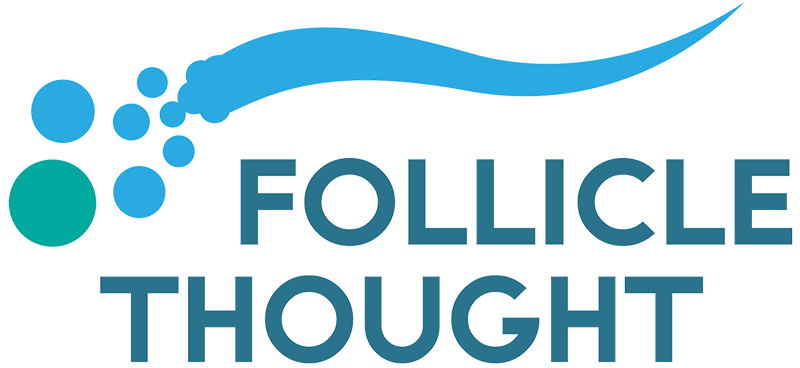OG6: A New Research Avenue for Hair Growth?
A team of researchers led by Chunming Wang from the University of Macau, in collaboration with scientists from the University of Nanjing and Wenzhou Medical University, have conducted a study on the use of an oligosaccharide biomaterial (OG6) to stimulate hair growth in mice. The study is based on understanding the crucial role of local immune cells, particularly regulatory T (Treg) cells, in controlling the hair follicle cycle. The research aimed to create a biomaterial that can attract Treg cells around hair follicles, leading to faster hair growth.
What are the Role of Carbohydrates in Hair Follicle Growth?
OG6 is a fraction of the carbohydrate glucomannan polysaccharide comprising six sugar units. Dietary carbohydrates impact the development and function of regulatory T cells (Tregs). In the anagen stage of hair follicle growth, Tregs preferentially localize to the hair follicle, particularly around the bulge region, where hair follicle stem cells (HFSCs) reside. Tregs are recruited to an area by cytokine/chemokine signaling. You can find the study here.
Study Results
- OG6:
- Selectively up-regulated CCL5 gene expression
- Increased percentage of skin pigmentation, percentage of hair coverage, and diameter of new hair (Figure 1)
- Accelerated the telogen-anagen transition in depilated telogen-stage mice after intradermal injection
- Had little effect on typical markers of pro/anti-inflammatory macrophage polarization
- Induced Treg migration in vitro and in vivo (Figure 2)
Below are some images showing the effect of OG6 on hair growth in mice. We contacted the researchers for higher-quality images but have not yet heard back.

Figure 1: The effect of OG6 on hair growth in mice. Five mice were used per group. Blank = PBS, Mock = GM400.

Figure 2: Fluorescent images of the effect of OG6 on Treg recruitment (the Tregs are the white arrows).
Clinical Potential
The study’s findings suggest that OG6 may offer a novel therapeutic approach for promoting hair growth in humans. By recruiting Treg cells around hair follicles, OG6 has shown promise in stimulating hair regeneration in mice. This research opens new avenues for designing glycan-based therapeutic tools with improved specificity and safety, offering potential benefits for individuals seeking treatments for hair loss.
Reflections
It should be noted that it is difficult for studies to move from the in vivo stage to human trials. While animal models provide valuable insight, differences in physiology and drug metabolism between species can impact the translation to humans. Even repurposed drugs that are indicated for other health issues can stall out. We contacted one of the researchers associated with this study. We asked how they plan to translate the findings to humans and whether they anticipate any associated challenges. We are currently awaiting a reply.
Some examples of potentially promising treatments that did not show efficacy or never had follow-up studies in humans are:
- Setipiprant – a PGD2 inhibitor initially indicated for asthma treatment.
- After studies showed that PGD2 was elevated in men’s balding scalps, PGD2 inhibitors such as setipeptant were repurposed for hair loss studies. However, human studies showed that setipeptant did not demonstrate efficacy compared to a placebo.
- Carbon 60 (C60) – A molecule composed of 60 carbon atoms discovered in 1985 for its antioxidant properties.
- Mouse studies indicated that C60 might increase the rate of hair growth and the number of follicles compared to control-treated mice; however, this did not translate to human studies. A human study found that C60 did not increase hair diameter, density, or percentage of anagen hair compared to the placebo, with the only difference being the speed of hair growth, which is not equivalent to more hair growth.
- Vitamin E & Selenium – Initial studies suggested that Vitamin E and selenium supplementation could reduce prostate cancer risk.
- More recent research, such as the Selenium and Vitamin E Cancer Prevention Trial (SELECT), has shown that these supplements may increase the risk of prostate cancer. The SELECT trial found no reduction in the risk of prostate cancer with either selenium or vitamin E. The risk of prostate cancer continued to increase with vitamin E supplementation, and males who had naturally high levels of selenium were at higher risk of cancer if also taking selenium.
- Copper peptides (Ghk-Cu) – A small naturally occurring peptide in human plasma.
- In vitro studies suggest that Ghk-Cu has anti-inflammatory properties that might benefit hair loss outcomes. An analog of Ghk-Cu, Ahk-Cu stimulated the growth of hair follicles in ex vivo studies.
- Clinical data on 45 patients with male pattern hair loss showed no statistically significant difference in hair length and thickness after 6 months of treatment.
- Reishi mushroom extract – A popular fungus used in Eastern medicine.
- While in vitro and in vivo data suggest that reishi mushroom extract can reduce DHT by inhibiting type 1 and type 2 5α-reductase, no clinical studies have been conducted to confirm this.
We hope to see more studies published for OG6.
Let us know what you think in the comments.
Posted in Hair Growth Treatment


will look for results in humans if Prof. Wang does a study for that. based on the news he was going to test in humans.
there was also this article published by the macau government. https://www.gov.mo/en/news/312785/
No one cares if it’s not hair cloning.
i’m interested in new treatments which don’t affect sex hormones, I think logically a lot of others are too.
Speak for thineself on that note.
Are any U.S. companies working on this hair loss problems?
Stemson therapeutics is an us bases company
I’m glad all of these mice get hair.
The pictures and data are impressive. “natural biomaterial” sounds promissing. So the big question as always is what is the timeline and how quick will this come to market.
Hiya John, you’re absolutely right, this is the big question! We have gone back to the researchers and asked a number of questions about how this might translate to humans and what their plans are moving forward. We are awaiting reply.
I have been hearing promising Results for the last 30 years. maybe I’m skeptical, but still waiting for something that actually works.
Were the developments/technology/discovery as advanced 30 years previously as they are currently? I highly doubt it.
Hi there, When will Human Clinical Trails become available? Please advise asap!
Thank you …..JD
“In vivo” means in the body in contrast to “in vitro” which refers to a test tube or similar lab equipment. Typically this means a human body, not a lab animal.
https://www.insights.bio/cell-and-gene-therapy-insights/journal/article/3115/Blazing-a-trail-for-iPSC-derived-cell-therapy-in-the-hair-loss-space New Stemson Interview
Hello, thank you very creating this insightful blog and updating it regularly. May I ask when you think hair replication will be available for ordinary people, like in how many years? Thank you.
Admin, could you maybe cover HairDAOs work? They are really doing a lot of interesting and important work lately!
Absolutely!
https://www.finsmes.com/2024/02/pelage-pharmaceuticals-raises-16-75m-in-series-a-funding.html